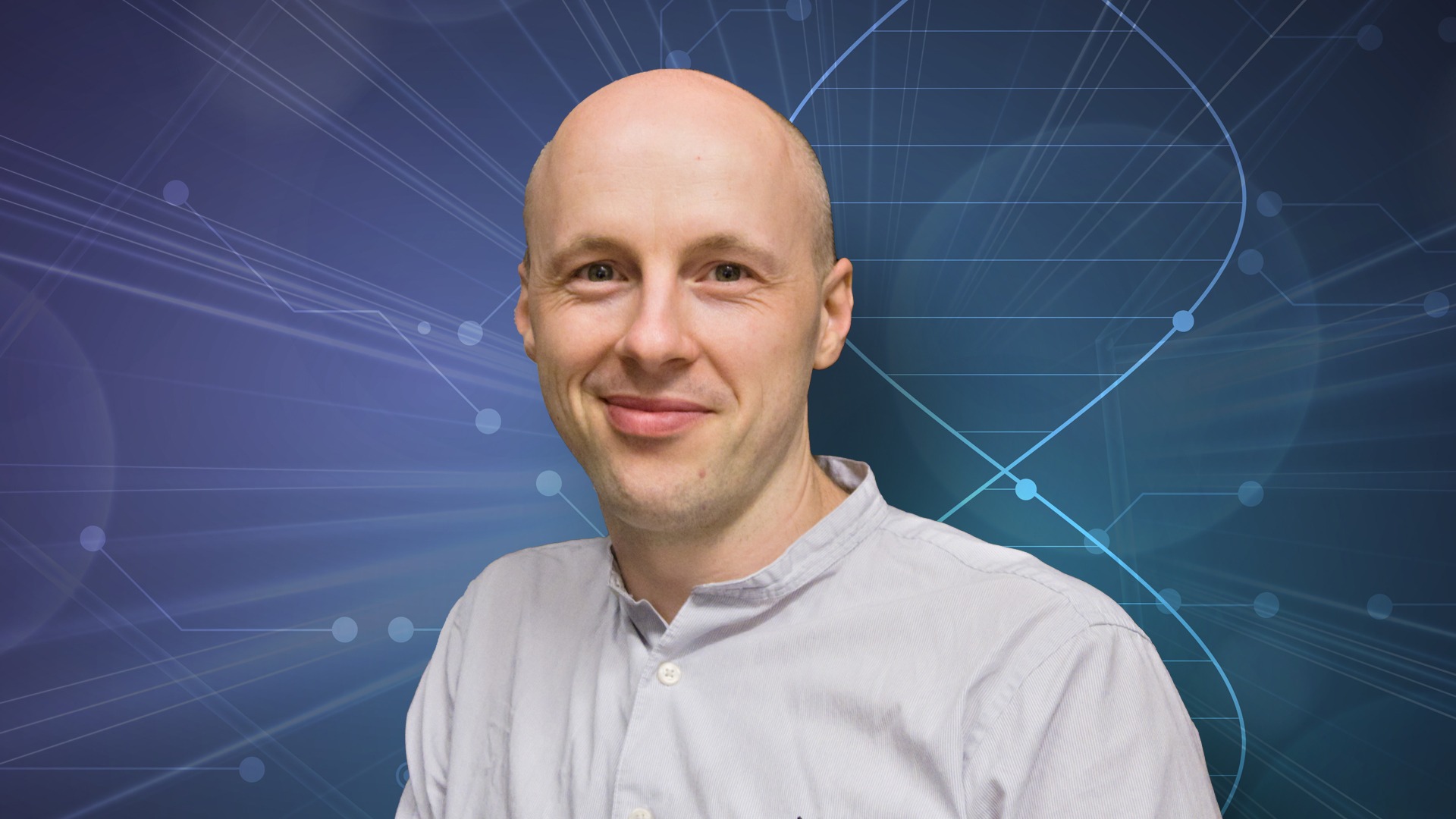Design buff Longzhi Tan awarded the Grand Prize for chromatin research

When Longzhi Tan (Stanford University) does not increase the resolution of viewing chromatin within cell nuclei, for which he is now awarded the Grand Prize of the Science & SciLifeLab Prize for Young Scientists, he designs everything from music videos to holiday cards.
The Hi-C method analyzes the spatial distribution of chromatin within a cell nucleus. A cell nucleus genome is cut into small pieces and then joined on the basis of 3D proximity. When doing this, artificial linkages – or chromosome contacts – are created. It is precisely this method that Longzhi Tan (PhD at Harvard University and currently a Postdoc at Stanford University), Grand Prize winner of the Science & SciLifeLab Prize for Young Scientists, has improved. He managed to obtain an average of about one million contacts per cell, five times as many as earlier attempts.
So why does this matter? High numbers of contacts are necessary for acquiring high-resolution 3D structures – which in turn allows researchers to distinguish between cell types in the absence of other information. This can be used in transcriptomics and epigenomics research, as well as for charting a complete cellular atlas of the human body and provide a structural basis for the diverse functions of human cell types.
Informing through design
For the past nine years, Longzhi Tan has worked on The Sabeti Lab’s (at Harvard University) holiday card, featured in outlets such as the Boston Globe and Smithsonian magazine. Last year’s card included the lab members – who was photographed in front of a green screen – flying in space, with information about each member popping up when hovering the mouse over them. He has also designed t-shirts for non-profit organizations, as well as made music videos and stop motion films.
“I really enjoy doing these designs because I believe that science should be fun, and that as scientists we should do our best to convey the positivity and joy of science to the public” says Longzhi Tan.
You were the “Absolute Winner” in the International Physics Olympiad 2008, how come you’re so good at physics?
“That was more than a decade ago!” says Longzhi Tan and laughs, “I’ve really enjoyed physics all my life, especially the feeling of finding fundamental principles from the world we live in. Luckily I ranked first in both total score (“the Absolute Winner”) and the theoretical part. My current research is still heavily physics-flavored, since 3D structure is a physical concept”.
More information:
Make sure not to miss the Science & SciLifeLab Prize Symposium: Roads to Research Excellence, where you will meet Longzhi Tan and the other winners and learn more about their research. Register today!
Learn more about the winners and their research on scienzeprize.scilifelab.se.
Tune in to our podcast featuring all four winners, sharing their current work and scientific journeys.




